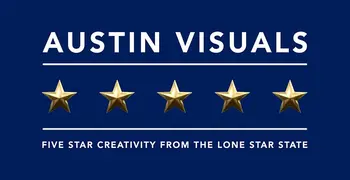
As long as there’s been marketing, content has been a part of the marketing practice. That’s led some marketers to wonder: Is content marketing really a net-new strategy, or is it just another fly-by-night marketing buzzword?
“It does have a buzzword factor, and I know people who absolutely hate the term. But it’s the industry standard term, so we’re just going to have to accept it, love it or hate it,” says Rebecca Lieb.
#1: Content marketing jobs are changing.
Content jobs have changed a lot — and they’re continuing to evolve, as companies become more strategic with their content efforts. Rebecca predicts, “I see the roles of a modern content team as really changing from maybe five or six years ago when people were saying, ‘Oh, hire an out-of-work journalist. They’re cheap and they can blog, and bingo, you’ve got content marketing.’ That doesn’t tie content strategically into other marketing activities, and it also doesn’t address the changing formats of content.”
Changing formats mean that content marketers should do more than just write a mean blog post. Rebecca says, “Video is very much on the rise, graphics are on the rise. Audio, like this podcast, is on the rise. Content teams very often need people with more than just writing skills, but production skills as well. You also need people who have talent in content distribution and optimization. You need strategists who can help tie content teams together with other marketing functions, be they communications or branding or social media or advertising. Analytics are crucial to calculating the effectiveness of content. It’s really become quite a strategic role, operationally, in an organization.”
#2: Contextual content experiences — like smart speakers and the IoT— are lifting content off the screen.
“One of my most recent projects was taking a look at what happens to content when it goes beyond screens, which is something that really fascinates me. In a world of beacons, censors, and the Internet of Things, content isn’t just about Facebook or a blog. It’s in the very air that we breathe,” Rebecca shares.
Consumers are interacting directly with AI and virtual assistants through Siri, which has its own form of call-and-respond content. That means that marketers must think about content and engagement in new contexts.
“Everything can become digital, and everything really is becoming digital. What happens when your clothing or devices you might wear interact with devices in a store or a location, and what kind of content emerges out of those interactions? I’m calling these contextual campaigns, because they almost go beyond personalization and the right message to the right person at the right time, and they pull in other elements, such as the right place and under the right conditions,” says Rebecca.
If you’re not already thinking about how your content can become more contextual, the time is now.
Welcome to Austin Visuals. We hope you’re enjoying this article! While you’re here, please take the opportunity to browse the visual stories and solutions we’ve created for our clients. If you have an article you’d like us to publish, email us at [email protected].
#3: Transparency is becoming just as important as the content itself.
With tactics like native advertising and brand-sponsored influencer content on social media, customers are growing more skeptical of branded content. Companies must follow suit by doubling down on transparency and honesty.
Rebecca explains, “Native advertising is incumbent not only on marketers to be more transparent, but also the publishers who are the bearers of those native advertising executions. These publishers need to have strong policies in place that basically come down to disclose, disclose, disclose, but also ensure that the message, the voice, the tone, the look, the feel is congruent with the publishing vehicle.”
If you’re working with social media influencers, you should also ensure that any content they create is fully transparent about the paid relationship.
#4: Marketers are establishing content as the building block of all marketing.
Rebecca advises, “I’ve realized that no marketing is possible without content. Social media doesn’t work without content, and neither does paid advertising. If there wasn’t content … all you’d have would be empty squares and rectangles and blank videos.”
Once you begin to view content as the starting point for all marketing efforts, you can more appropriately map the right content to the right stage of the buyer journey.
Rebecca continues, “Without content, not a thing moves forward in the entire marketing landscape. That’s why I call it the atomic particle. It’s one of the building blocks.”
#5: The lines between paid, owned, and earned media are converging.
When I asked her to define content marketing today, Rebecca responded, “As a separate entity, I define content marketing in its purest form as owned media. Owned media are those channels that a marketer largely controls. It might be your website, it might be a blog, it’s even your email, because email is a content channel.
Content marketing can exist in its purest state, pure owned media. But increasingly, those lines are blurring. If you ask, ‘What’s Facebook? What’s Twitter? Is it paid, owned, or earned?’ The answer is yes, it’s all three.”
The truth is, content can no longer live in silos, with one team focusing on owned channels like the blog and another team worrying only about paid media. Efforts must work together in conjunction for your content strategy to actually work.
Written by: HEIKE YOUNG
Austin Visuals is a full-service 3D, 2D, Motion Graphics, Live Video, E-learning, Digital Publication studio. We’ve been creating digital magic nationwide for a decade. We work with companies of all sizes from startup to standout. Call us for a free consultation. 512-591-8024 [email protected]




